Thank you by led zeppelin let’s get started before we dig in i just want to ask if you continue to like and subscribe and share this channel with anyone you think that might be interested in it i really appreciate the support you’ve been giving me
And as we grow this channel i can bring more of these episodes to you so i really appreciate the following so far so let’s dig into this song thank you by led zeppelin it’s everything you thought it was in terms of it being a love song
But it’s a lot more than that and as i started to dig into this song there are so many layers of nuance not only musically but also dramatically in the story and i remember when i first heard this song it was i had heard it on the album but then when i really
Experienced it i was about 11 years old and i was in a park and i had my older sister and all of her school friends were young teenagers there and we were in this park and this meadow and this creek was there and the boys and girls were hanging out
There doing hippie things and having a good time and there was this guy that was sitting on a picnic table one of their friends and they were all around him and he was playing these you know the great chords the when i heard him play that i was so transfixed i said
I want to be able to do that that sounds so beautiful and the the chords and the music sounded just like the setting i was in it was in that meadow and that creek and it was folky and surreal and really hippy and i just loved it from the moment i
Heard it played by this guy and then it became one of my favorite songs on led zeppelin so what i want to do in this episode is actually dig into some of the things that are going on musically and dramatically and try to explain why the song has the feeling that it has
And how all those things that are coming together the drama and the lyrics and the orchestration are making it sound like it is and so let’s talk a little bit about that to to start things off first of all the story is no doubt a love story it’s a profession of love by
Robert plant who was a mere 20 years old i think when he first penned the lyrics to this and yes it’s a profession of love but there’s something dichotomous about the story there’s words about extreme love and and happiness but there’s also some concepts of sadness in there
And longing so when there’s love there’s a discussion of love lost when we’re talking about the sun we’re also talking about the rain and we’re talking about happiness and we’re talking about sadness and pain and this song actually is sort of ambiguous and untethered and the music is actually allowing that to happen
And so i want to talk a little bit about from a compositional perspective how the two come together so the first thing you’ll notice when you look at this song are the is the chord structure and the question is what key is this song in
You know it starts with the d a d chord it moves to a c chord and then it moves to a g chord but they keep pounding the d chord at you and you’d think it’s in the key of d because it starts in the key it starts in the chord of d
And then it moves around this progression and then it comes back to d again and you think well it’s got to be in the key of d well it’s actually not in the key of d it’s in the key of g and but they’re driving the tonal center of d
Towards you with all the repetition of d and they’re actually minimizing the key center of g and how do they do that well it’s really cool that they’re using the uh the progression of a one four five a g chord being one the c being four and the d being five
And they’re playing it backwards they’re playing at five four one that’s the first part of it where they’re actually reversing the one four five progression and that gives it sort of this sort of you know the the the world is sort of going in a different direction kind of feel
The other thing they do is that the home chord the g chord is actually played rather benignly because it’s not a g with the g note in the root position it’s actually a g with a b in the bass and so it’s actually reducing the function of the one chord
And making it not feel like you’re totally home when you hit the g chord right and the second thing that they’re doing since they’re starting with the five chord and the five chord in music is generally a dominant chord and it’s generally a pivot chord that wants to
Tilt back to one and it points you to the one chord but in this case they’re not using a dominant seven that chord the d7 chord which has this tritone which insists on resolving to the g the home chord no they’re just using a triad they’re not using the dominant seventh so
They’ve actually reduced the function of the five chord it’s not acting as a v chord it’s acting as sort of this free-floating triad that’s out there and then the one chord the home chord is actually reduced in its function because they’re playing it not using the bass
So you have this sort of amorphous phantasmic chord progression that the functions of the chords are not following what they normally would follow and that gives you this sort of floating folky surreal feel that the track has in addition to that there’s an alteration on the verse that they’re using which reverses the
Order of the chords so you never get to settle in just like the sun if it refused to shine i’d still be loving you and then there’s pain and there’s sadness and there’s love lost well they don’t let you kind of get your feet on the ground here because when they do the
Uh the verse and they do the shuffling of the chords um on the the second verse they um they come in and they say c chord g chord and d chords backward progression again and they’re actually gluing in some lyrics on that which take you from the love story part to the um
Little drops of rain whisper on the pain tears of love lost in the day has gone by so we’ve gone from a love song to this sort of longing bit of sadness and heaviness and aching that’s in there so this simple song has this incredible texturing that’s going on yes it’s a
Love song but it has all these other sort of human emotions that are going on in the chord progression the way it’s set up and the way they shuffle the chords on the on the verse make you feel like you’re really not anywhere other than in this floating beautiful space that we’re in
In this folky world that they’ve created additionally what helps the um the story unfold is the um arrangement orchestration of the music so i counted there’s probably 24 strings on this track now i’m counting guitar strings there’s a beautiful 12 string guitar that’s playing the chords in the background through the whole thing
And then you also get a a six string guitar acoustic playing it as well so that’s 18 strings and then you get jimmy page on his solo adding another six string guitar on the guitar So you’ve got 24 strings that are jangling and that orchestration really helps give it sort of a folky vibe and sort of a kind of a spiritual vibe and then on top of that you’ve got that organ that john paul jones is laying in and it sounds really reedy and really
Kind of flute like and it almost reminds me of almost like a field organ that has bellows that you push with your feet it sounds really organic and it’s kind of angelic and it’s laying in there so the strings and the organ part together are creating this sort of cloudy beautiful cloud texture
And then plants vocal and his lyrics are combining with that and then you bring in sort of the heaviness which is coming in from john bonham’s drum i mean you got a full acoustic drum kit with a classic bottom beat and you got john paul jones with an
Electric bass which is the only electric instrument in the entire song so they really create this very dichotomous orchestral world that they’re doing as well which helps make the lyrics of the story and the drama of the story feel the way that they feel lastly the confusion and ambiguity of the
Where is home in terms of you know what key are we in is further complicated uh to in a playful way because they’re really driving home the centrality of the d harmonies in here the guitar solo even though we’re playing chords in the key of g
The guitar solo is clearly in the key of d not g and that’s because jimmy page is playing these c sharps in the solo He’s giving you the c sharp which is clearly in the key of d it’s not in the key of g because in the key of g you’ve got a c natural not a c sharp so you have these kind of tensions that are happening where we’ve got it
We’ve got a chord structure in the key of g we’ve got a guitar solo on top of that chord structure which is in the key of d and again it kind of creates us where are we where is home and um going back to the lyrics i think what’s really poignant about
This is the first word of the song sort of sets up the mood the word is if one of the most powerful provocative words in the english language and robert plant’s countryman rudyard kipling had the famous poem if and this song starts off with the word
If and i’m sure that robert plant was very familiar with that poem he for his lyrics even used biblical references reference to psalm 46 2 i think it is with the mountains crumbling to the sea he’s making these really big statements of love and he’s
Also using the word if which is sort of suggesting that at some point something might happen but we’re not there yet so the whole thing of this song is that we’re really not home yet okay and so if also sort of lends itself to the ambiguity of the chords because there’s
There’s something uncertain about this whole thing so all of that comes together to give the track it’s it’s beautiful sort of floating and you know ambiguous sort of colors that it has let’s take a look at some other elements in the song that are contributing to the mood of the song
So in addition to the the chords that are changing and then the key sort of tension you know where is home it’s further exacerbated by another key change that happens on the chorus in the chorus the kind of woman i give you my all kind of woman nothing more we’ve just moved
Momentarily to the key of a now we’re adding a whole new key to the song and cleverly what they’re doing that key transition is even somewhat weakened because the key of a the chord that’s signaling the key is actually the shortest part of that little break there so he’s playing
B minor kind of woman i give you mile to the e and he plays it again b minor to the e so they play those twice but then they resolve it to a so a has the shortest duration although it’s the key signature for that little break and it’s a classic
Two five one progression two being the b minor five being the e and one being the a and the a happens to be a secondary dominant that transitions back to the top d a to d and so a being a dominant of five right so they’re adding yet another key
Momentarily they sort of weaken the potency of that key by having the a only be there very briefly but cleverly that a really does sort of tilt you back to d which isn’t the key but it’s the tonal center of the song so you have all of this stuff going on
In this simple song and it really does speak to all of the drama that’s going on in the story and last but not least what i think is really profound about this piece is the the motive that recurs the entire time and the motive is this It’s that little phrase of three notes the g the f sharp and the e and it happens everywhere and it has a very powerful effect i would consider it to be what you would call in classical music a light motif and a light motif um l-e-i-t motif is really translates into the
Leading motive there’s something really powerful that’s driven home as they repeat that phrase so many times in the song notice that it’s in the chord so it’s the soprano of the chords hear the motif see again it’s unchanging the chords are changing but the motive is staying the same Throughout the chord progression and so that motive i would i would um look at that like in classical music or even in film music in the in the golden age of hollywood there were so many great composers of film music in hollywood not the least of which was max
Steiner definitely check him out he did gone with the wind and so many great movies and he would take a lot of classical sort of light motif concepts and would assign them to characters so a character in the stories would have their own little motive so when
When scarlett o’hara would come in she would have a lyrical motive and rhett butler would come in he’d have a lyrical motive even the the mansion the terror mansion had a motive and gone with the wind and it’s not unusual in classical music and in opera to have the characters have their own
Sort of thematic theme it even happened in modern uh sort of classical you know hip-hop stuff like hamilton the characters all had their own theme and so that’s a light motif so there’s a light motif in here now i’m going to project what i think that character
Is and for me i think this moat this motif is actually hope uh for me it means hope because it’s the one anchor it’s the one thing that is anchoring the whole thing together that light motif and i think the song really does speak to kind of the endearing possibilities of hope
And the word if sort of is a kind of hopeful sort of word if this were to happen then that would happen and so i i personally interpret that as some sort of hope or eternal longing or something that could be maybe isn’t but it could be
And it’s constantly repeating and i love the effect of that motif that it has on the song let’s take a look so when you’re seeing it on the g That motive has an f sharp in it and so what really makes you feel like the song is in the key of d even though it’s not is because we have his d chord and we have that f sharp that’s in the motive and that f sharp anchors that d chord
Because it’s the third of the chord and it’s the third of the chord that gives them their quality any any quality of any chord is driven by the third of the chord in this case it’s a major third so we have a major d sounding chord when he moves to the second chord
In the progression he has this very unusual chord and it actually is a portal type chord so the motif is in there but he’s using a c chord it’s actually he’s taking the third out of it so now the the c chord doesn’t have any anchoring you have no idea if it’s major
Or minor because there is no third there’s no e in there and he has this uh the c he has a d which is a nine again reinforcing the fact that you think it’s in the key of d but then as the motive goes through see what happens when you keep that f
Sharp on that you get this very eastern feel because we have a c chord without the e in it we have a d which is its ninth and then we add this f sharp was a sharp 11 or it’s a lydian sounding thing if you if you know that much theory
But that sound is a very very you know kind of eastern kind of sound and it passes through this song relentlessly and i also think it sort of portends to where zeppelin ultimately went when they started using these kind of eastern chords you know you ultimately start seeing it in the Like on friends on the third album and then you start to see more fuller sort of eastern kind of feel on on the fourth album in four sticks and the bridge on four sticks is this incredible sort of introduction of full on zeppelin eastern sort of stuff which ultimately comes to its full
Realization on physical graffiti on the song cashmere but i think this chord is so powerful because it’s kind of where the light motif creates this sort of portal in the song that is reinforcing that organic surreal kind of unanswered question of the song if and then again he follows through
On the g chord and the g chord doesn’t have the g and the bass but the mode the motif is on top of it giving you the g on top the f and then the e so that thematic material has so many kind of layering effects in the song and
It again reinforces the drama of what you think is this little song but it’s really this kind of vast sort of textures that are going on and then jimmy page is quoting that so much he introduces the solo with i mean he stays on the motive three times Right and then he There’s the motive again right he has the motive the whole way through uh the the solo so i think when you step back and you look at all these um compositional and dramatic elements that are in the music and you kind of think about lyrically what the story is
About and sort of this concept of of love but there’s sadness and we don’t know why there’s unanswered questions but there is a sort of hopeful thing that’s going on i think all those elements when i started to dig into this thing and i really dug into this i mean
My notes are very reminiscent of you know beethoven i got coffee stains on i mean i just kept looking at this music and looking at what was going on with the lyrics and the drama and i was just so blown away i finally just had to just stop
Thinking about it because it’s so profound i had no idea what i was getting into when i looked at this song because i just thought it was going to be a simple little chordal love song but i just love the depth of all this and i think as a composer
That um you know when they wrote this song jimmy page might have been 26 and as i said plant was probably 20 that i think any composer will tell you that they sometimes will grow into their own music and they’ll look back and in the ensuing years of your own
Experience and wisdom you look back at a piece of work that you did earlier and so much profoundness starts to unfold and reveal itself to you and you look back and i wouldn’t doubt that if they look when they do look back on this song that as they see how their lives
Unfolded that they did see the things that we all see as humans in terms of yes great love but great sadness and great longing and um i think it’s really sort of embodies life itself and uh it’s it’s a very sort of profound little song
So i do want to uh make that point about this music and then i want to comment a little bit on how the studio version is juxtaposed against the live version so let’s talk about that so now i’m going to talk about a very important part of led zeppelin and that is the
Amazing differences between led zeppelin in the studio and led zeppelin live now many of you have asked me to talk about this and do some episodes and i’ll do that at a later date but i’m going to touch on it here on the song thank you because
Thank you is one of the five or six tracks of led zeppelin that when they bring it live really undergoes a very large transformation so let’s talk a little bit about that transformation so the tracks that i was thinking of in terms of the ones that are quite different with led zeppelin live
Are a whole lot of love which they have the huge medley in between uh ramble on which goes from acoustic to electric live uh bringing on home which has a tremendous jam session in the middle probably the biggest track that goes through the the most major changes dazed
And confused and i can’t wait to do an episode on that studio versus live but thank you also goes through quite a transformation and let me just kind of share a personal experience with when i first encountered led zeppelin live it was through a recording but
Um if you can think about it and imagine so back in the day when i first heard led zeppelin you know would have been on their studio albums and you know in the 70s early 70s and late 60s there were no motion pictures of led zeppelin you had no idea what they look
Like you only could tell what they sounded like in fact when they would sell you albums literally there wouldn’t be any anything any you know many pictures of them on their albums there was this sort of leds up in two which had them sort of buried in this collage of
Of of of of military pilots here but um you’d go to the store and you’d get the album and you’d see wow it’s sort of you know benign packaging who are who is this mystery band and then you’d listen to the music and it would just blow your mind and you were
Only left with your imagination as to what human beings were creating this music it was incredible well for me that was you know kind of step one of getting to know led zeppelin now i didn’t have a chance to see them live early in their career i finally got
To see them in 77 but i was very lucky in 1970 i guess it was that my brother-in-law and sister uh gave me a had me uh listened to an album that they got which was a bootleg the first bootleg of led zeppelin was released in 1970
And it was called um on blueberry hill which is when they were it’s september 4th 1970 where they played at the la forum and this is an original copy that i have and treasure of that and when i first heard this album you know i had the cost headphones on sat
Down in the beanbag chair in my sister’s apartment and i spent the entire weekend just under headphones listening to this i could not believe what i was hearing because i was accustomed to this incredible statement and then i heard this and this concert and it was really it’s kind of grainy
Because it’s bootleggy and so it had its own sort of kind of veneer of mysticism to it but the raw power of what happened live versus the power that i heard on the studio albums was yet again the next level of mind-blowing for me i mean it was scary
It was really frightening it took me a while to kind of figure out you know what i was hearing it was just a it was just wild and just untethered energy i couldn’t believe it and the song thank you on this album was one that surprised me the most because
It was an acoustic song in the studio which is all i knew it to be and then on here it was an amazing electric sounding song with playing so different than what i heard on the studio version and the studio version you know i opened up this episode with the acoustic guitar track
You know that jimmy page played but in the live version right from the get-go you know he never played it that i’m aware of with an acoustic guitar he played it with electric guitar with the band full on version of it and i think what makes led zeppelin so different
In their live versus their studio is how much they stretch the music right not the least of which was dazed and confused but they really augmented the music but on thank you they do it as well where they you know create these electric textures and pages playing is so
Different on this and even more central in some ways where the the solo on the acoustic version on the studio is this very lyrical kind of very classical you almost have these sort of You have almost these you know cello lines and things like that very pristine but then you get live and they play the song and and it has even more dynamic range in some sense even though it’s not acoustic it’s electric i mean he starts off very very quietly you know on the electric
Guitar he does the intro one time around and then the band comes in and he throttles the the gain up and it’s and then he gets into this It’s super super huge and super big sounding but the biggest difference you know led zeppelin live versus led zeppelin studio is paige is playing and how stretchy and rubbery and bending and they’re really taking chances and everything is just pushed to the max you know the bends are bigger the
You know the the time is augmented and i’m just going to play a couple of um a couple of uh signature sort of bendy things that paige does in the live version just to kind of show you how different it is so there’s there’s a couple that um i’ll play one is
Uh the one of the bends that he did uh in the very earliest versions in 1970 on blueberry hill one of my favorites and it’s this one he goes You know he plays that kind of rubbery bending stretch has nothing to do with the acoustic version but it’s just such an evocative sensual bend and then later on down the road when you started getting into the the leads up and getting back together and stuff he started adding these even
Bigger bends like this one And uh so his bends got even bigger as the years went on so it that kind of playing you know where he’s You know all that kind of feel you see how different that is from the studio version and so we’ll come back in another episode and talk about led zeppelin live versus led zeppelin studio but i think thank you is one of those tracks that really sort of uh
Embodies just how diverse this band was and why they were so great and it’s really fun to kind of learn to play both sides of the same story if you will so thank you again no pun intended for watching this episode please like and subscribe and share this content if you enjoy it
And i really appreciate all the support and we’ll come back to you again thank you You

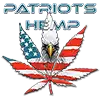

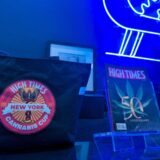

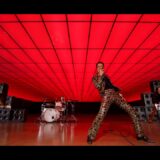
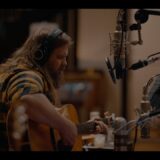
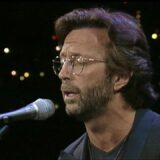
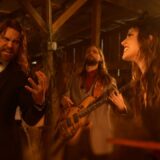
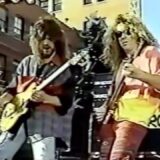
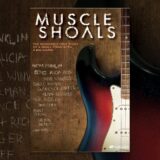
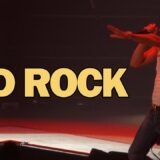
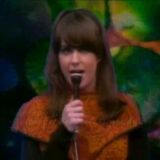
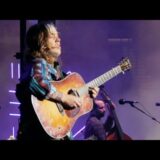
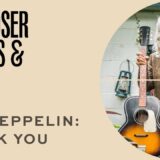
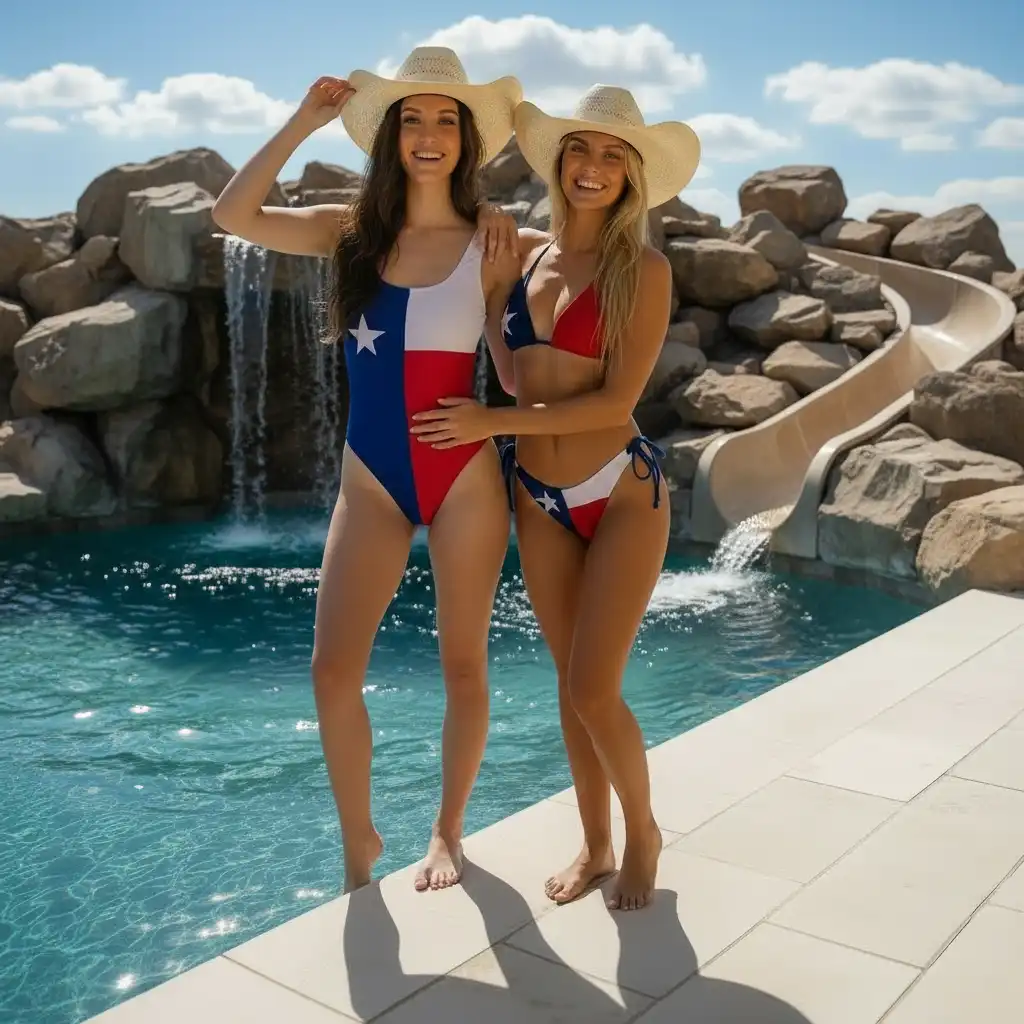




Great info but … Where is the actual lesson part .. yeah your very knowledgeable. But teach to play it 😳🤔. Not what the video is about 🤷♂️🤷♂️
That was majestic 29 minutes
Wow thanks man!
Awesome video. So well explained it was very enthralling, Carl. good to see you again, my friend!
😊
THANK YOU Carl, for putting so much listening, playing, and insight into your analysis of LZ as a band, and of Thank You the song. I came across your presentation seeking ideas for a "non-replicate-the-original" version of the Thank You solo. I'm 70, daughter is getting married in November, and she has asked that the long lived remaining founding members of our humble wee band play at her wedding. Thank You was one specific request – inspired no doubt from listening to my generations music for nearly 3 decades….. Cheers from Christchurch New Zealand.
so where was the lesson?
On the track Led Zeppelin?? You mean the track Thank You BY Led Zeppelin? Haha
DUDE…THANK YOU!!!
For someone who has rudimentary musical depth… love your vids that try to explain to me why they're so great. Keep up the great work!
Jimmy's bends were elastic and huge from the get go on Good Yimes Bad Times, You Shook Me etc and he and Robert always vied against each other in that classic duelling Q & A they'd do.
Thanks for loving Zeppelin !
Thanks so much for sharing your knowledge and insights into these cherished songs.❤
Fantastic Carl, that break down is truly amazing and very touching.I'll be stopping by one of my favourite places early tomorrow morning on the Hartside summit with views over to the Solway firth and mountains across England and Scotland listening to Thank you.
You know how to disect a song
I have always felt the hopefulness in this song, not only in the repeating motif but also the beautiful melody and lyrics, particularly "when mountains crumble to sea, there will still be you and me". Such a beautiful song and one of my favorites. I loved hearing your analysis of it and of course now I appreciate it even more ❤
I love this channel and all the content. I do think it’s very interesting sometimes discussing the key signature of songs. I don’t understand your argument that the key of this song is primarily G. It still feels like D. Technically, it seems to be in D. We know that not all music has to follow these rules rigidly, but it’s still in D. What do you say?
Great video overall, beautiful appreciation for the artistry of LedZep. And Carl's playing of Page's chordplay and solos is nothing short of lifelong mastery. Theory-wise, I think Carl is, imho, basically saying that the natural C puts this song in the key of G. And if you play the G major scale here the notes work. But I would agree with Larry that Thank You, is like so many Zeppelin tunes based on the blues. It can and should be looked at as in the key of D. The blues is rarely going to have a strict scale or mode use from a player like Page. A key of D blues scale would be mixolydian-ish, but also use flat 3, flat 5, and major 7 sometimes when you're on the 5 chord of A7. Almost anything goes in the blues, and the C chord here is just the flat 7 chord. In the bridge, when Plant's lyric is "Nothing more", there's a classic 2-5-1 of A: Bm to E7 to A, which then is the 5 chord of D. Again no criticism here, just a way of looking at things from a non-classical pov.
Carl Baldassarre makes wonderful videos about my favourite guitarist.
Man! I wished I would be as smart as you! You have a knowledge other rockers like me will only look up to you as a Master!
It would be great cuz your vids are so awesome that if you would get to the point of the lesson and not so much talking sorry
Grazie! Sharing with all the "Clapton is God" people…
Love Jimmy's Vox acoustic, beautiful guitar.
Led II, my favorite album from the band.
Well said. I know people who played that song at there wedding. Both Wedding March and Bride/Groom dance. You have a great outline to the Review of that Song.
the last part of the video is really interesting too, thanks again for that !
Thanks to you.
I picked up some Uriah Heap “Wizard” on those opening chords! Or am I hearing things.
Loooove this song sooo much
Adam and Eve's Love Song.
Always love your zeppelin videos
Around 28:30 there are some bendings. I guess these bends where played with a mechanical device on the guitar. I think on the Page Plant video Unledded he played it on a red or brown Les Paul. I think there is a mechanical device in there. I think it's called the B-bender.
i am hard of hearing and this album was the first album i listened to on headphones. so it was the first album that i actually heard. i was visiting my aunt and uncle in Pa. my cousin was in vietnam and they let me use his 8track player and headphones. this song and album blew my young mind. thank you was my favourite song on the album. it made a boring trip where i was left to amuse myself one of the best ever. i saved up for some headphones. it changed my life. whooo my life was saved by rock and roll. with a shout out to lou reed.
If I may suggest; there’s a live version of this song I’d like to recommend all to look into. A show they did in Vancouver on 21.3.70 was broadcast on FM radio has been for years a famous bootleg for us Zeppelin die hards. It’s called Pb (pure blues) or Mudslide. Either one you find, it’s the same show. The version of Thank You here is just wonderful. John Paul opens it with a church-like Hammond Organ intro. Bonzo’s drumming here is a reminder as to why he couldn’t ever be replaced. Lastly, Jimmy’s solo is just dripping with emotion.
I think you’ll all enjoy it as it’s in perfect stereo FM clarity!
Beautiful breakdown, Carl. I loved it…and I’m only the bass player! Zeppelin were the ultimate unit. The perfect band at the perfect time. John Paul’s contributions were monumental and even that’s an understatement. The guy was SO good that he didn’t even need to be in a band. Like you, I recognized this when I was 13 years old…and heard LZ II. That was IT for me. At that young, ignorant age I knew that I was hearing something unique. All these years later I’m still trying to decode this band. Excellent video here. Thank you Carl.
Robert asked Jimmy, if he could take lyrics Little drops of rain, whisper…. and Jimmy told him , sure you can do …. Greetings to you Carl, and thanxs for musical explanations, Mica 🐕🐾🌻
so hard to find someone show jimmies noodling at the end (outro) of the song?
You should do a video on Jimi Hendrix Here my train coming acoustic version.
Great stuff, thanks. I'm wondering if you have something about Tangerine, Rover and All of my love
It's pretty cool that Jimmy Page was able to compose something like that. It's intelligently thought out music.
Those Emotions. Are
The Souls Journey of Being Human.
Beautiful. just Beautiful !!!
And of Course Robert Was Magical !!!
Thank you Carl!! I listened to this song when I first heard LZ 2 and felt an otherworldly emotion. It is a masterpiece. Brilliant breakdown. LZ has been my favorite band since I was a child and Ive always appreciated their amazing talent. Ive never tired of it. Thank you!!
One of my favourite Songs of all time!
Cool episode
Great take on this song that I have loved for decades.
Is your wife a teacher named Kim?
You are a gift. This video kept coming up as a suggestion and I kept blowing it off because of the simplicity of the song. I learned so much, got chills there at the end with the live solo. The context behind the music, along with your personal childhood discovery, all provided with such enthusiasm and passion, adds so much to the videos you produce. They all resonate deeply with my own experiences. Thank you sir!
The brilliance of Jimmy Page – making something complex sound so simple and beautiful 🙌🏼
The scored and published sheet music of “Thank You” is in the key of D. Some believe the key to be D Mixolydian. Robert Plant is quoted as saying they considered
keys of songs to be centered on how Jimmy Page played the chords. Traditionally, the key of any piece of music has been determined by what scale the notes of the
melody fall into. I didn’t know there was a key called D Mixolydian; always thought it was just the name of a scale, or mode. D Mixolydian does seem to make sense for
the melody Plant sings. Zeppelin/Page most likely considered “Thank You” to be in the key of D.
Thank you for doing this, a song that I have always found to be beautiful is even more so now.
The longing and sadness is maybe from being away from home for long periods of time on tour?